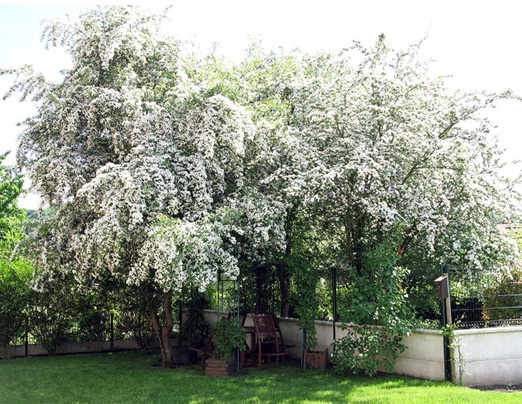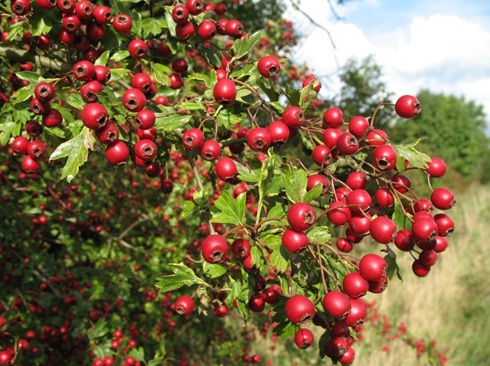Categories
Calendars
Guides
Reviews
Archive
Gallery
Articles
Ask Our Gardening Expert
>Hawthorn
It can withstand constant cutting and shaping to make livestock proof barriers and when permitted, its clusters of small white blossoms make an impressive show in spring and its red, autumn berries last into winter. Its toothed and lobed, dark green leaves provide rich autumn colour. As both a standard tree and as a hedge plant, its blossom provides nectar for bees, berries for many birds and shelter for many species of wildlife. The fruit, known as ‘haws’, are used in traditional Chinese medicine and as a food. It is a native of temperate regions of Europe, Asia and North America and a member of the rose family.
Hawthorn in blossom
Haws of the hawthorn in late summer
Many selected forms of this tree have been produced with white, pink and red flowers in both single and double forms. The doubles set fewer fruit but are more attractive in blossom. Crataegus phaenopyrum and crusgalli are grown for their autumn colour. Hawthorns are tough plants and grow in extreme garden conditions, hardy to -25oC, but are better suited to areas with cold winters and in larger rather than small urban gardens. They can be raised from stratified seed and selected forms are usually grafted.
In its common form (Crataegus monogyna), this dense and spiny, deciduous tree can reach 6m in height and forms a large part of many field hedges.
